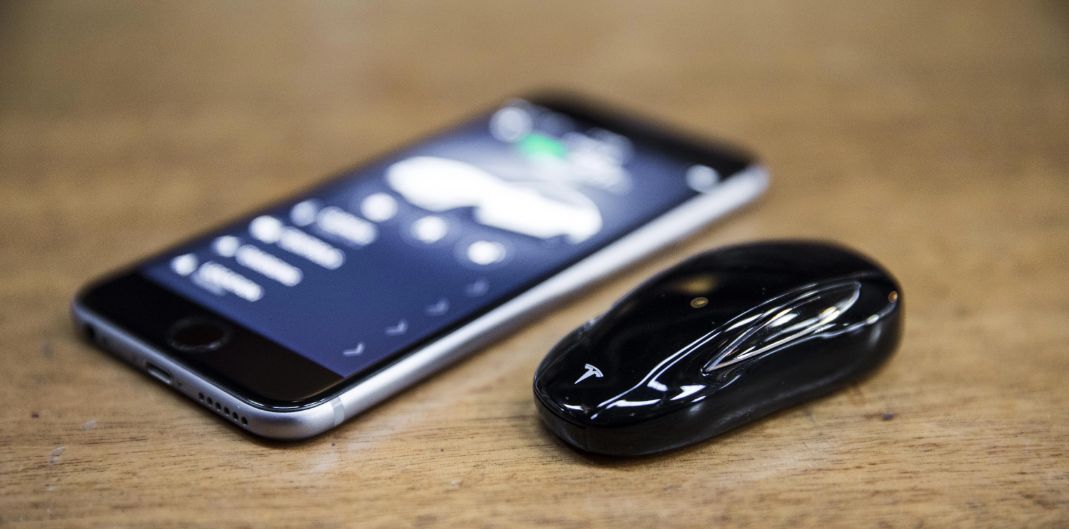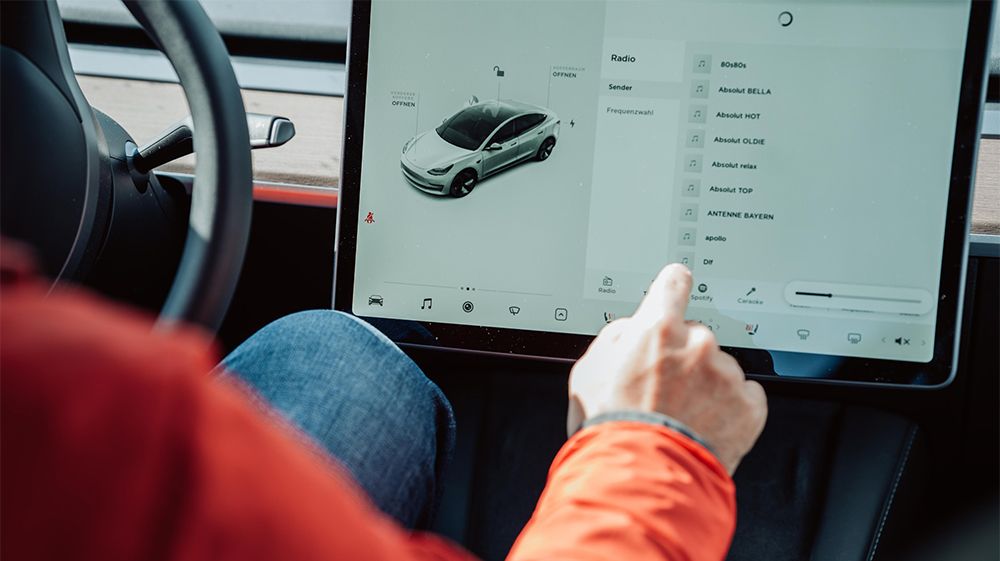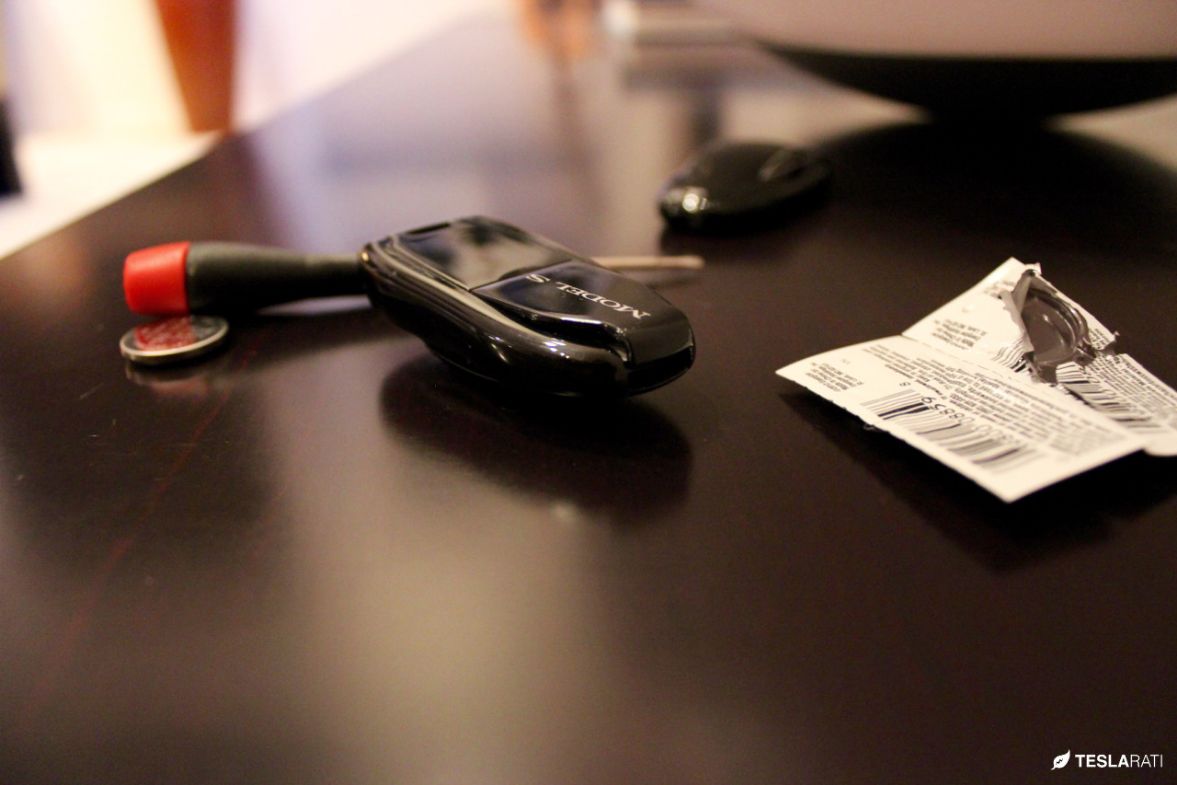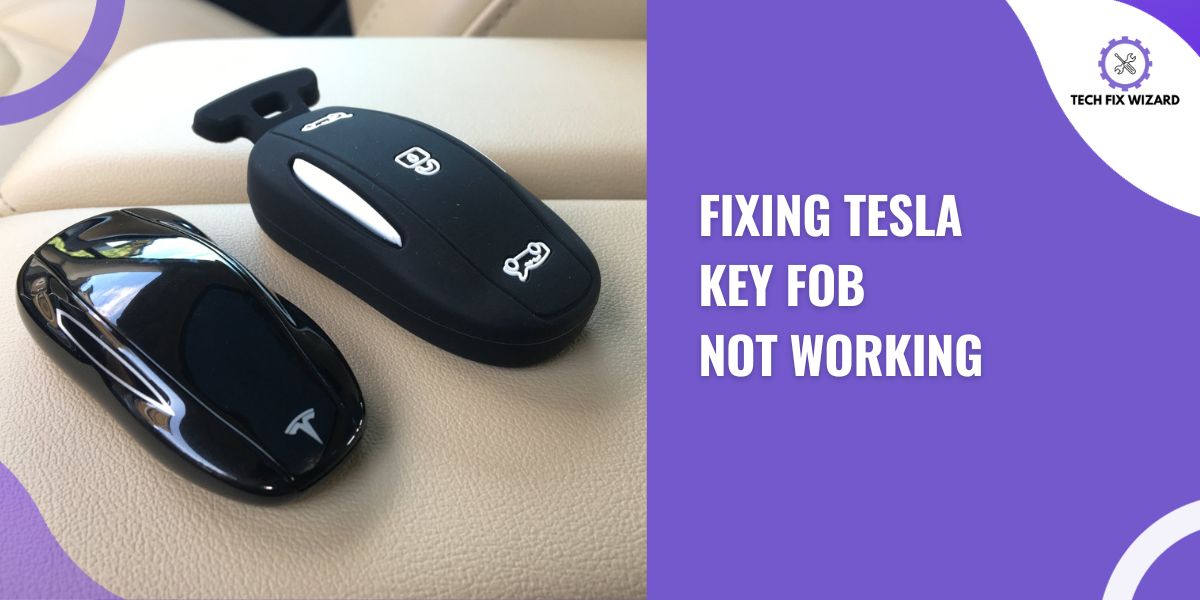Experiencing issues with your Tesla key fob not working can be a frustrating and inconvenient situation for any Tesla owner.
The key fob is a vital component that allows you to conveniently lock, unlock, and control various functions of your Tesla vehicle.
When it fails to function as expected, it can disrupt your daily routine and raise concerns about potential underlying problems.
In this guide, we will explore common reasons behind Tesla key fob malfunctions, and possible troubleshooting steps to resolve Tesla key fob not working.
Contents
- 1 9 Reasons Behind Tesla Key Fob Not Working
- 2 Troubleshooting Tesla Key Fob Not Working Issue
- 3 1. Tesla Key Fob Not Working
- 4 2. Tesla Key Fob is Not Working After Changing the Battery
- 5 Reasons:
- 6 Alternative Ways to Use if Facing Tesla Key Fob Not Working
- 7 FAQs
- 8 Q: My Tesla key fob is not unlocking the car remotely. What should I do?
- 9 Q: Why is my Tesla key fob not working after changing the battery?
- 10 Q: My key fob’s buttons are unresponsive. What can I do?
- 11 Q: How far should my Tesla key fob work from the car?
- 12 Q: Can a mobile phone interfere with my Tesla key fob’s signal?
- 13 Q: Why does my Tesla key fob work sporadically?
- 14 Q: My key fob is not locking the car. How do I lock it manually?
- 15 Q: Can I use my Tesla app as a backup if the key fob fails?
- 16 Q: Are there any security measures in place if I lose my Tesla key fob?
- 17 Q: Can I get a replacement key fob from Tesla if mine is lost or damaged?
9 Reasons Behind Tesla Key Fob Not Working
Before resolving the issue by applying various troubleshooting steps listed in this article, let’s first have a look at some of the common causes of the key fob not working issue.
It will help you to resolve the situation more effectively. So, let’s find out the common causes first.
| No. | Reason | Description |
|---|---|---|
| 1. | Low battery indication | The vehicle’s touchscreen displays a low battery warning for the key fob. |
| 2. | Depleted key fob battery | The key fob battery is drained and needs replacement. |
| 3. | Battery Corrosion | Corrosion on the battery contacts or inside the key fob can interrupt the electrical connection, causing the key fob to stop working. |
| 4. | Electrical Interference | Strong electrical interference from nearby devices or sources can disrupt the key fob’s signal transmission, causing it to lose communication with the vehicle. |
| 5. | Physical Damage | If the key fob has been subjected to physical damage, such as dropping or water exposure, it may result in internal components becoming dislodged or damaged. |
| 6. | Unpaired key fob | Attempting to use a key fob that is not paired with the vehicle. |
| 7. | Broken board test point/trace | Damage to the key fob’s circuitry affects its functionality. |
| 8. | Malfunctioning MCU | An issue with the Main Control Unit (MCU) affecting key fob communication. |
| 9. | Software update required | The key fob or vehicle software may need updating for proper functioning. |
Troubleshooting Tesla Key Fob Not Working Issue
When encountering a Tesla key fob not working issue, two common situations to consider are general key fob malfunctions and specific problems that may arise after changing the battery.
Let’s examine each situation separately to address the Tesla key fob not working issue.
Also Read: How To Fix Tesla Touchscreen Not Working – Here’s How To Fix It!
1. Tesla Key Fob Not Working
Let’s first dive into troubleshooting the first situation you might encounter while using your Tesla key fob on a usual basis.
It is when you notice that your Tesla key fob is not working for locking, unlocking, or performing various other functions.
1. Inspecting for Physical Damage:
Before proceeding with any troubleshooting steps, check for physical damage on the key fob. If you notice any cracks, dents, or signs of water damage, these issues could be affecting its functionality.
If the key fob appears damaged, skip to the next step for further troubleshooting. Otherwise, proceed to the cleaning process.
2. Minimizing Electrical Interference (Reposition the Key Fob):
To minimize electrical interference, try repositioning the key fob and keep it away from mobile phones and other electronic devices. These devices can emit signals that might disrupt the key fob’s functionality.
By ensuring proper separation from such items, you can enhance the key fob’s signal strength and ensure smoother operation.
Experiment with different positions and locations to find the best configuration that minimizes interference and maximizes the key fob’s performance.

3. Cleaning the Key Fob:
Now that you have confirmed there is no visible physical damage or positioning issue go for cleaning the key fob it might resolve the issues.
To clean the key fob effectively:
- Use a screwdriver to remove the back cover and detach the battery.
- Remove the side covers and wipe the dust from the sides using a brush.
- Detach the middle cover and side circuit board with a tweezer.
- Apply electronic cleaner solvent on the circuit board and clean with a brush.
- Wipe out dust from all covers.
- Reassemble the key fob securely.
- Test the key fob by unlocking your car to confirm success.
4. Performing Key Fob Reset:
If the key fob is still not functioning correctly, it’s time to perform a key fob reset.
To reset your Tesla key fob, follow these steps:
- Stand next to your Tesla vehicle with the key fob in hand.
- With the vehicle turned off and all doors closed, press and hold both the “Lock” and “Unlock” buttons on the key fob simultaneously.
- Continue holding the buttons for about 10-15 seconds until you see the light or LED flash.
- Release both buttons.
- Wait for a few moments, and then test the key fob by pressing any button to check if it’s now functioning properly.
- If the key fob is still not working, jump to the next step.
5. Checking for Software Updates:
If the reset didn’t yield positive results, consider checking for software updates for the vehicle’s system.
Updating the software can potentially resolve some software-related issues that might be affecting the key fob.
It may not directly address hardware-specific key fob problems but it can fix bugs that might be causing the key fob not working issue.
Follow the manufacturer’s instructions for updating the key fob software and the vehicle’s infotainment system.

6. Checking Key Fob Pairing:
If the key fob is still not working, double-check its pairing with the vehicle’s security system.
Ensure the key fob is properly paired according to the vehicle’s manual. If it’s not paired correctly, follow the steps to establish a connection.
| Step | Action |
|---|---|
| 1 | Access the ‘Locks’ tab under ‘Controls’ on your vehicle’s touchscreen. |
| 2 | Follow the onscreen instructions to add the new key fob. |
| 3 | After successful pairing, the key list will display the new key fob. |
| 4 | Customize the name of the key fob if desired. |
| 5 | Unpair the key fob if needed. |
7. Checking the Battery:
After verifying the key fob pairing, the next step is to check the battery. Access the battery compartment, check the voltage, and replace it with a new one if necessary.
Use the recommended battery type for your specific key fob model.
To replace the key fob battery in your Tesla, follow these steps:
You Might Like Reading:
- How To Fix Tesla Speakers Not Working – Try These 8 Fixes
- Tesla Not Connecting To Wi-Fi – 8 Quick Fixes
2. Tesla Key Fob is Not Working After Changing the Battery
Now it’s time to troubleshoot the Tesla key fob not working after changing the battery.
By following these troubleshooting steps in detail, you can effectively address this issue

Reasons:
First, let’s see the reasons that can cause the issue. Remember that these reasons usually result during the battery-changing process, so try to be extra cautious while changing the battery.
| No. | Causes | Description |
|---|---|---|
| 1. | Incorrect Battery Insertion | The new battery may not have been inserted correctly, leading to poor electrical contact. |
| 2. | Reprogramming Needed | After replacing the battery, reprogramming might be required to establish communication. |
| 3. | Potential Damage | Accidental damage during battery replacement can affect the key fob’s internal components. |
Troubleshooting:
Following are the troubleshooting steps below to resolve the issue at hand:
1. Check Battery Insertion:
To address the first reason, carefully inspect the key fob’s battery compartment. Verify that the new battery is correctly inserted, with the positive and negative terminals aligned according to the key fob’s markings.
Ensure the battery is not loose and sits securely in its designated slot.
2. Reprogramming the Key Fob:
If the key fob is still unresponsive after verifying the battery insertion, reprogramming might be required. Follow these steps to reprogram your Tesla key fob:
- Put the key fob near the driver’s door handle.
- Press and hold the lock button on the key fob for 5 seconds.
- The car should beep twice to indicate that the key fob has been reprogrammed.
4. Contact Tesla Support:
If the key fob continues to exhibit issues even after reprogramming, it’s advisable to contact Tesla customer support or visit a Tesla service center.
They can provide specialized assistance and diagnose any potential damage to the key fob. In case of damage, they can guide you through the process of getting a replacement key fob.
Alternative Ways to Use if Facing Tesla Key Fob Not Working
There are various alternative methods you can try for accessing and using your vehicle if your key fob isn’t working:
| No. | Alternative Ways to Use Tesla | Description |
|---|---|---|
| 1. | Tesla Mobile App | Control your car remotely using your smartphone. Lock/unlock doors, open trunk, control climate, and more. |
| 2. | Key Card | Use a slim card to tap and unlock the car or start it by placing it near the center console. |
| 3. | Phone Key | Your paired smartphone acts as a virtual key, automatically unlocking doors and starting the vehicle. |
FAQs
Q: My Tesla key fob is not unlocking the car remotely. What should I do?
Verify that your car’s battery is not dead. If it is, try unlocking the car using the physical key blade.
Q: Why is my Tesla key fob not working after changing the battery?
Try re-syncing the key fob with your car. Refer to your car’s owner’s manual for instructions on how to do this.
Inspect the key fob for physical damage or water ingress. If you find any, consider getting a replacement key fob.
Q: How far should my Tesla key fob work from the car?
The key fob’s range varies, but it should typically work within 30 to 50 feet of the vehicle. Obstructions or radio interference may reduce the effective range.
Q: Can a mobile phone interfere with my Tesla key fob’s signal?
Yes, electronic devices, including mobile phones, can sometimes interfere with the key fob’s signal. Keep them away from the key fob when attempting to use it.
Q: Why does my Tesla key fob work sporadically?
It may be due to a weak battery or a poor connection within the key fob. Replace the battery and check for any visible damage.
Q: My key fob is not locking the car. How do I lock it manually?
You can lock the car manually by pressing the lock button on the door handle or using the touchscreen inside the vehicle.
Q: Can I use my Tesla app as a backup if the key fob fails?
Yes, the Tesla app allows you to unlock, lock, and even start your car remotely, acting as a backup in case of key fob issues.
Q: Are there any security measures in place if I lose my Tesla key fob?
Yes, Tesla vehicles have advanced security features. If you lose your key fob, you can remotely disable it using the Tesla mobile app or the website.
Q: Can I get a replacement key fob from Tesla if mine is lost or damaged?
Yes, you can order a replacement key fob from Tesla, but note that it might require some verification and may incur a cost.

John Paul is a tech enthusiast dedicated to troubleshooting. He is passionate about fixing glitches, simplifying complexities, and empowering others in the digital realm.

